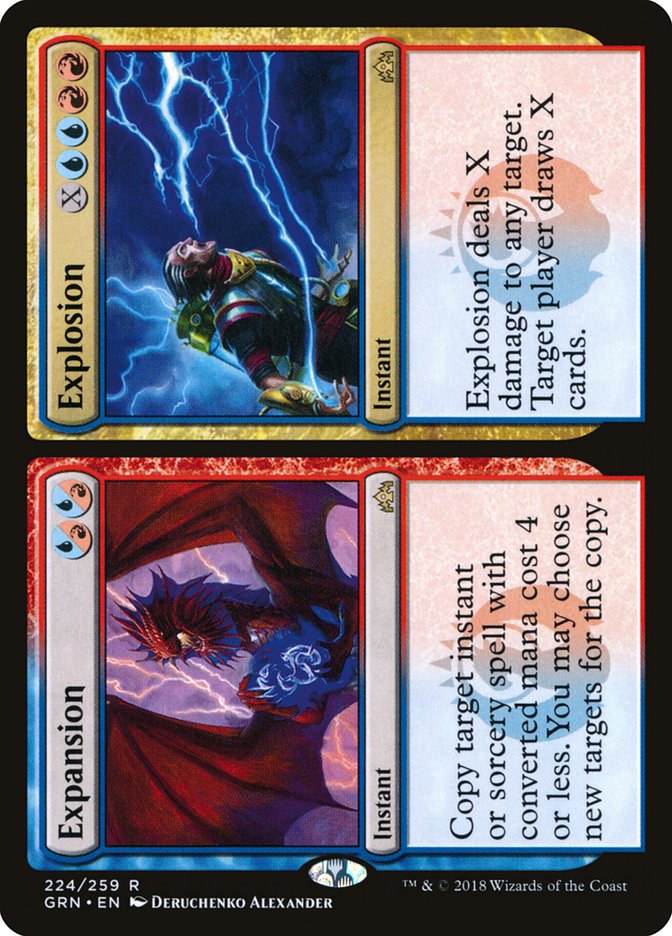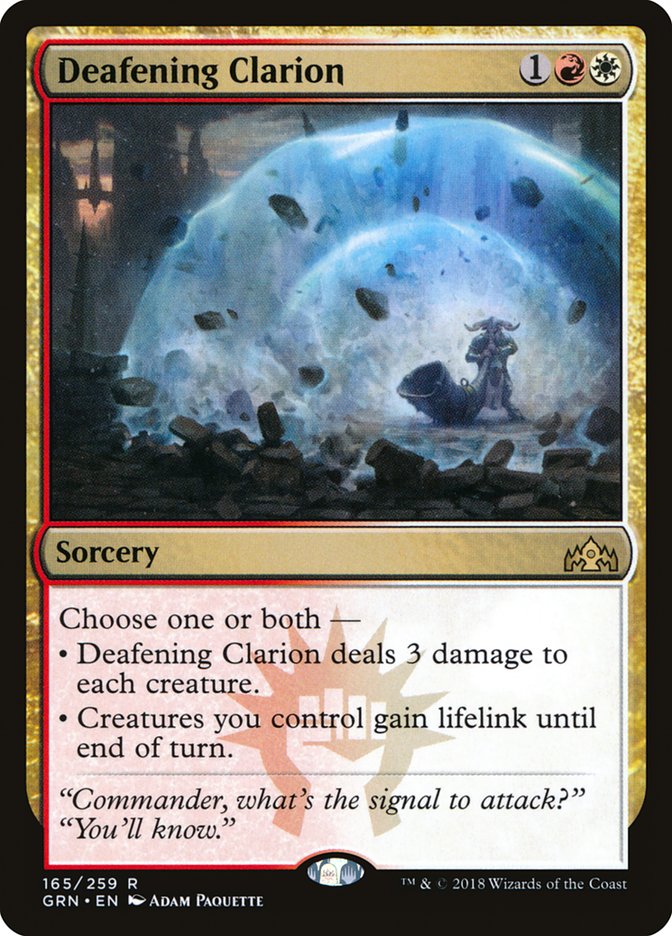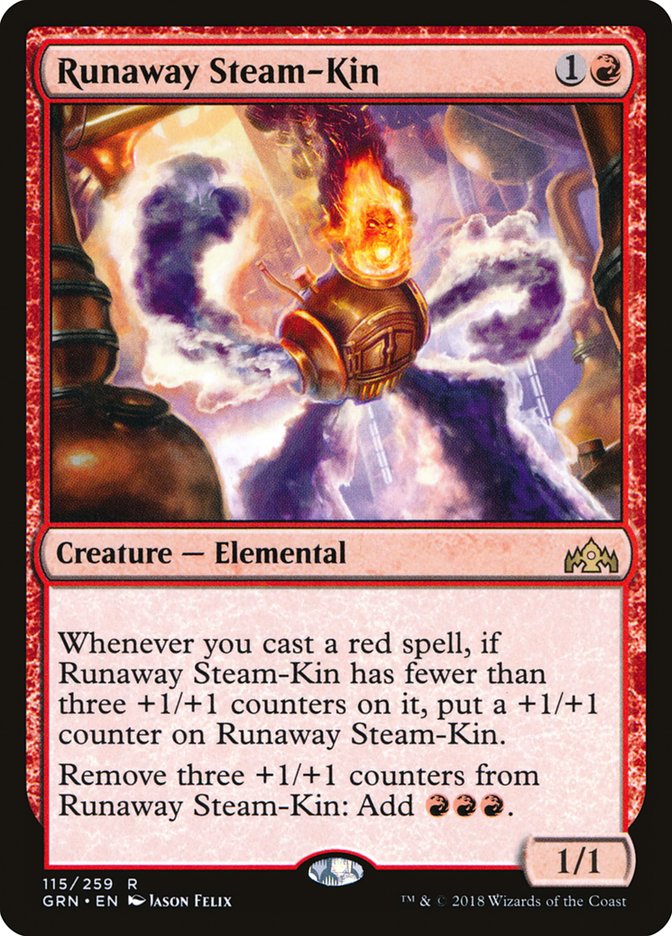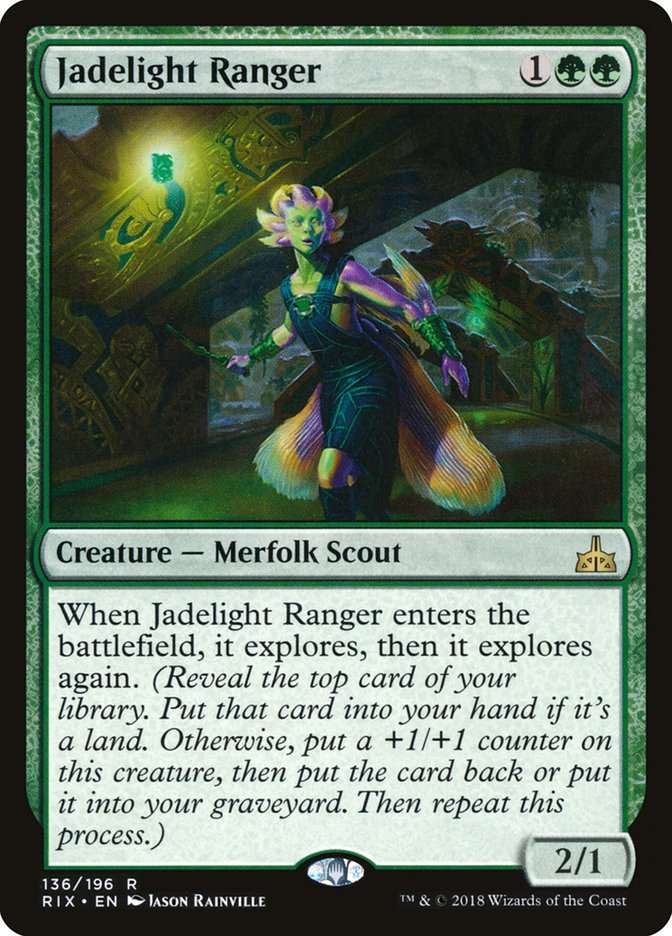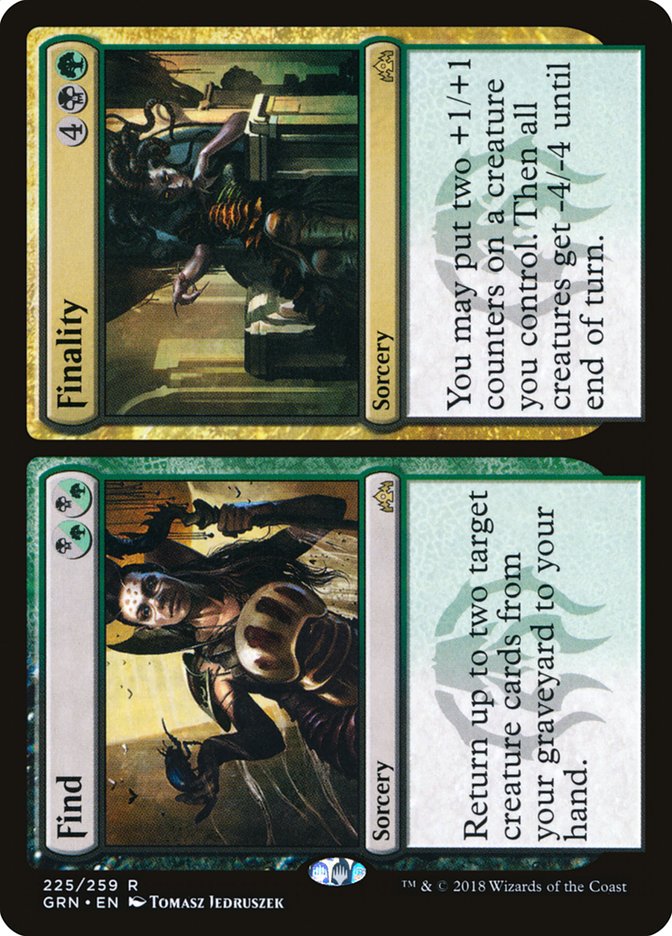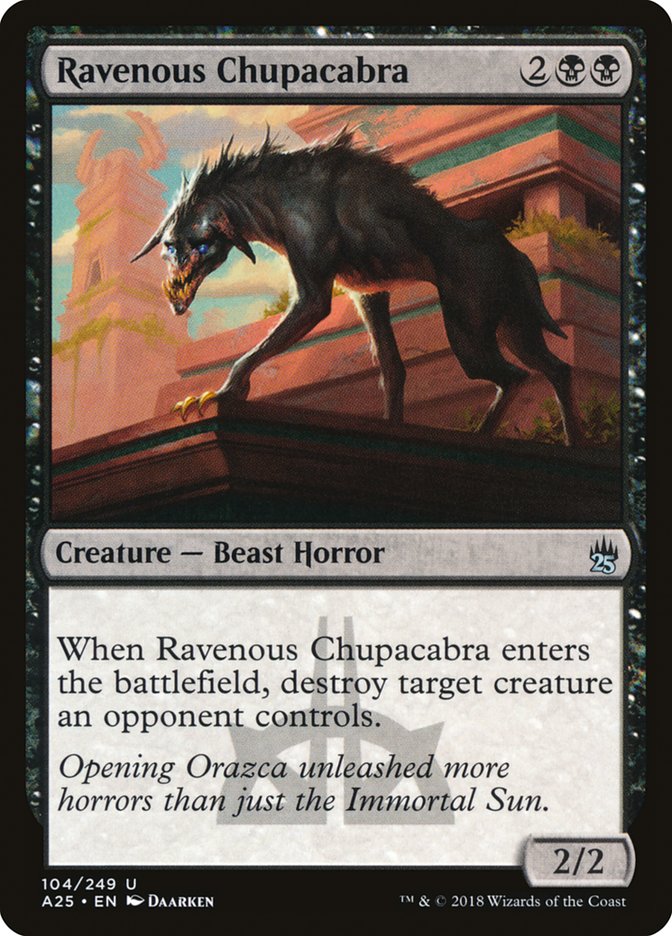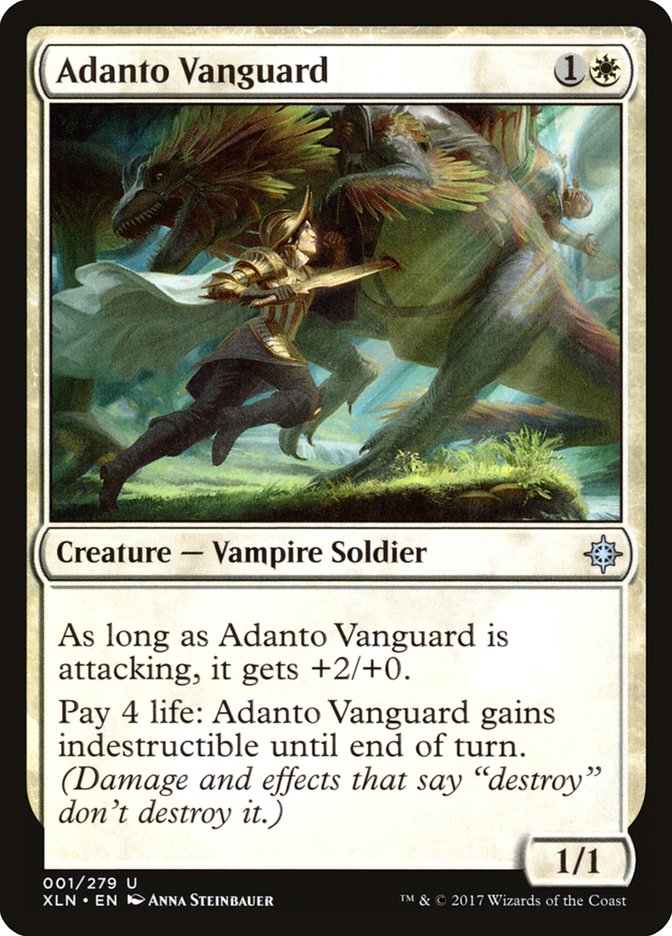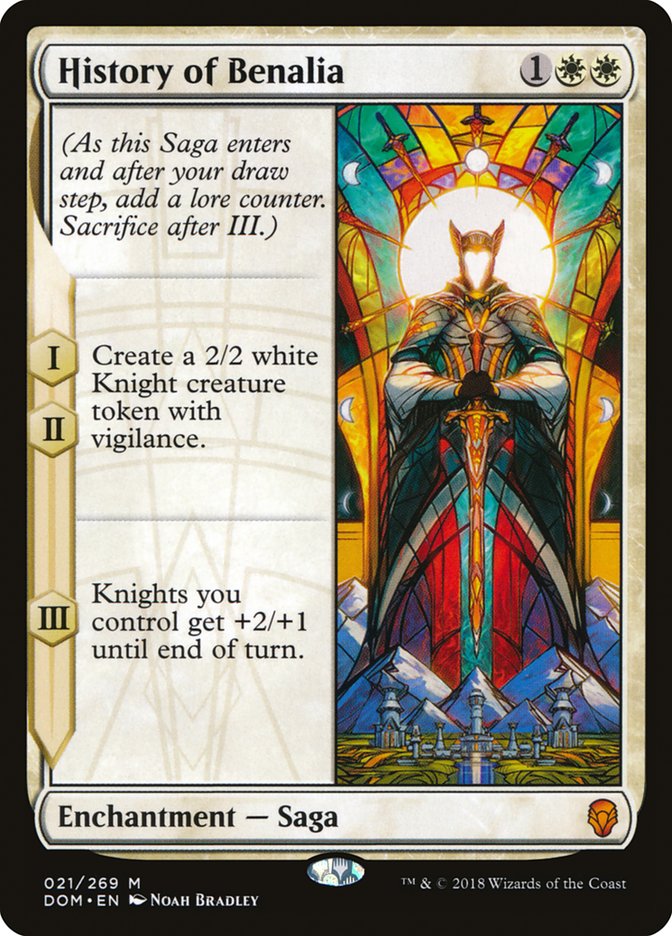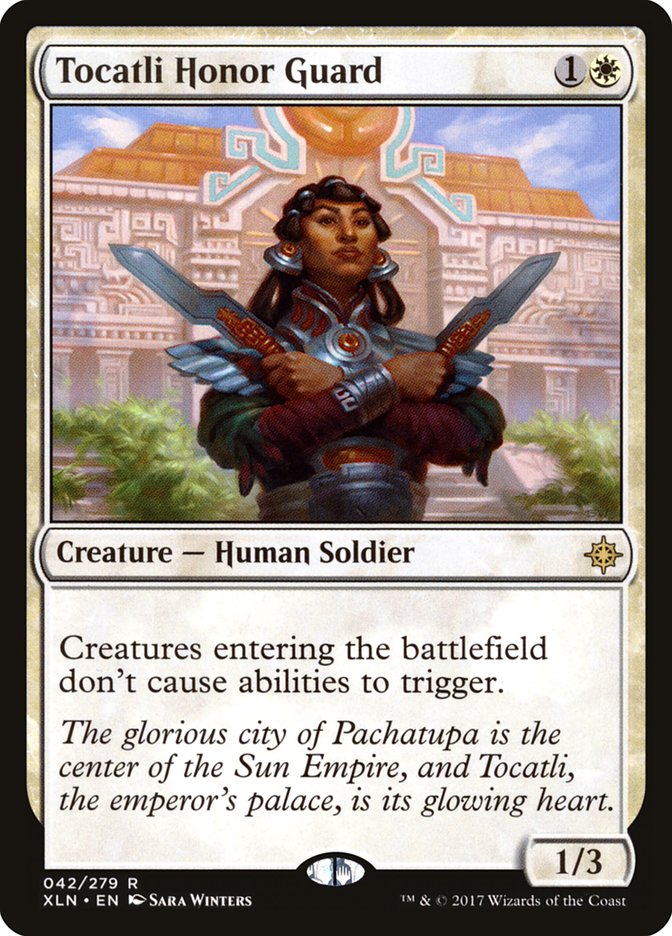[Welcome to another edition of
Fact or Fiction!
Today, Ryan Overturf, Cedric Phillips, and Ross Merriam are here to
render their verdicts on five statements leading into Pro Tour Guilds of Ravnica. Don’t forget to vote for the winner at the end!]
1. With Eli Kassis’ win at Grand Prix Atlanta, Jeskai Control is
the deck to beat heading into Pro Tour Guilds of Ravnica
.
Ryan Overturf: Fiction
. Jeskai Control is a very powerful deck and is the consensus home for
Teferi, Hero of Dominaria currently. While Teferi is an abstractly very
powerful card, arguably the most powerful card in Standard even, the
strength of the rest of the deck is very context driven. Standard currently
has several archetypes that are well-represented in the metagame at large,
with Izzet Drakes and Boros decks being the most represented at the winning
tables on Magic Online more recently. Beyond that though, there’s Mono-Red
Aggro, Golgari Midrange, Mono-Blue Aggro, Selesnya Tokens and others that
are likely to be present in the field, and there’s a little too much
happening to confidently call Jeskai the deck to beat.
A field like this means that Jeskai has to be prepared to defeat a wide
range of things, while the other decks more or less get to know how Jeskai
plans to combat them and to try to win two sideboard games with this
information, assuming Jeskai even wins the majority of its game 1s – a
condition that I’m not convinced is the case. Deafening Clarion is a card
that you’re kind of priced into playing in your maindeck, and it’s hardly
good in all of these matchups; even in the matchups where it’s strong, it’s
not going to be strong in every game. Adanto Vanguard and various
four-toughness creatures are aplenty in Standard right now.
If Jeskai can weather the early game and land a Teferi in basically any
matchup, I think it’s fair to say it will be favored in that game. It’s the
deck’s ability to consistently jump that initial hurdle that I’m skeptical
of. I think Jeskai should absolutely be in any Standard gauntlet worth its
salt and is a reasonable choice for the Pro Tour, but I do not consider it
public enemy number one.
Cedric Phillips: Fact
. I’m going to start my answer to this question with the following
statement – Teferi, Hero of Dominaria is the most powerful Standard-legal
card and I don’t think this is debatable. With that out of the way, one
would be foolish to ignore Jeskai Control when preparing for Pro Tour Guilds of Ravnica since it’s the home of the most powerful card in
the format. The question is whether to play it or try to beat it.
Right now, I think Jeskai Control is one of the few decks that can win Pro
Tour Guilds of Ravnica because Pro Tours have been pushed back
deeper into a format’s lifespan. As such, it gives elite control players
the opportunity to build their Jeskai Control deck for a metagame they can
analyze and predict accordingly. Yes, the MOCS this past weekend was much
more aggressive than what we saw at the start of this Standard format, but
that wouldn’t make me shy away from Jeskai Control as an option. Honestly,
it would make me do the opposite because now a control player knows exactly
what they need to gun for and can build accordingly.
Can Jeskai Control be built to beat a metagame that contains Experimental
Frenzy, Adanto Vanguard, and Carnage Tyrant, three very different cards
that cause problems for control decks? My answer is yes because not only is
Teferi absurdly powerful but so is Expansion//Explosion and Deafening
Clarion. And that’s what I love most about Jeskai Control in this format –
unlike other control decks over the past few years, Jeskai Control can
actually just flex its muscles over its opponent instead of hoping to have
all the right answers at the right time. I love this deck for the Pro Tour
and think it’s the deck to beat this weekend.
Ross Merriam:
Fiction.
Golgari held the title of deck to beat for several weeks this season,
longer than any other archetype, but with a target on its back for so long
and the seemingly unsolvable puzzle of gaining an edge in the mirror that
lasts for more than a day or two on Magic Online before being one-upped,
the deck has declined to be another face in what appears to be a sizable
crowd of viable Standard decks. Everything from red aggro, blue tempo,
white aggro or midrange, hard control decks, and whatever you want to call
something with Arclight Phoenix has had success in the format.
That’s going to lead to an interesting Pro Tour where the competitors have
to figure out if one of the established archetypes is best or there is
something we’ve all missed up to this point that is ready to take the
format by storm. There really isn’t a deck to beat because even among the
established decks, everything has its own strengths and weaknesses that can
be mitigated or exaggerated via small tweaks based on the current metagame.
If you’re playing a known quantity, it’s less about picking the “best” one
and more about tuning your list appropriately and knowing how to adjust to
the many variants of the other known decks.
2. With Etienne Busson’s win at Grand Prix Lille, Mono-Red Aggro
is the deck to beat heading into Pro Tour Guilds of Ravnica
.
Ryan Overturf:
Fact-ish
. I’ve played against less and less Mono-Red Aggro as this Standard format
has progressed, though it has draws that can beat anything which is where
you want your proactive deck to be, as you also get free wins from
punishing opponents who stumble. The reason that I would consider Mono-Red
more of the deck to beat than Jeskai is that I would be more confident
playing a maindeck that lines up well against the aggressive decks of the
format and sideboarding in to a configuration that has game against control
than the other way around. As long as your sideboard has ways to shore up
your deck’s vulnerabilities and some game against Teferi you should do okay
against control. If you lose game one against Mono-Red though, it’s much
more likely that they either just nut draw you or you stumble in a
sideboard game and you lose the match. This is more or less the reason that
you see decks like Izzet Drakes maindeck Shock and rely on sideboard
Disdainful Strokes for the Jeskai matchup.
Beyond that, conventional wisdom is that most players shy away from control
decks at Pro Tours. It’s really hard to get everything right when a format
is still loosely defined. Pushing back the Pro Tour further out from set
release has curbed this some, and controlling strategies have certainly won
Pro Tours; it’s just that you need to be more in tune with the format to
build a reactive deck correctly than a proactive one. Beyond that, if
you’re expecting the conventional wisdom to hold true for this event, then
you’ll want to maindeck cards that are better against decks like Mono-Red
Aggro than they are against decks like Jeskai Control. So, when I say
“fact-ish,” what I mean is that if your deck has a strong plan against
Mono-Red Aggro, that is a good sign, even if Mono-Red Aggro itself is not
the most represented deck.
Cedric Phillips: Fiction
. As good as red-based aggressive decks have been over the past few years,
the cards available for Mono-Red Aggro in this Standard format aren’t on
the level they have been previously, which means I think it’s fairly easy
deck to ignore. Yes, Goblin Chainwhirler, Runaway Steam-Kin, and
Experimental Frenzy are incredibly powerful cards, but the pieces around
those cards do nothing to excite me. There are no Bomat Couriers and
Scrapheap Scroungers this time around. There are no Abbot of Keral Keeps
and Stoke the Flames to raise the power level beyond what is reasonable.
And, thankfully, there are no immediate game winners like Chandra, Torch of
Defiance or Hazoret the Fervent to contend with.
Red’s good this time around. But good isn’t great, and for me, if I wanted
to play something aggressive, I’d be reaching for History of Benalia
instead of The Chainwhirler.
Ross Merriam:
Fiction.
Everything I said in the first question applies here, but this one is much
more egregious so I’m going to take the opportunity to insult my boss and
hope he thinks I’m kidding:
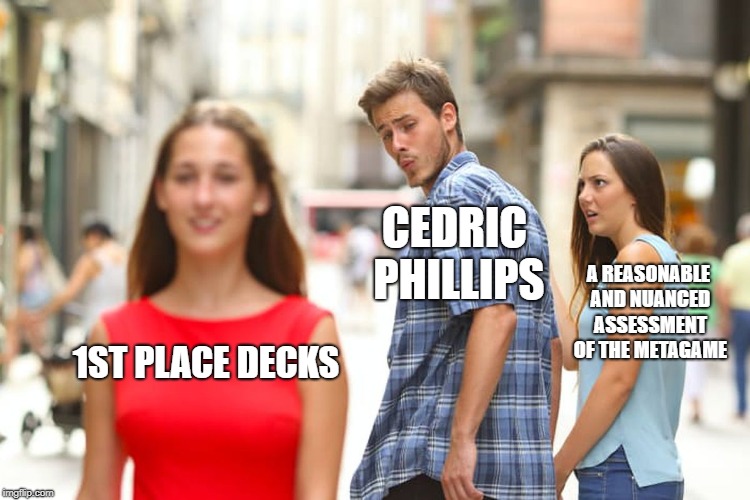
3. Even though it didn’t exceed expectations in Atlanta or Lille,
Golgari Midrange will still be the most played deck at Pro Tour Guilds of Ravnica.
Ryan Overturf:
Fiction
. Golgari Midrange is a powerful deck that is very flexible and can be
tuned to address whichever matchup you like. Despite this, the deck is
experiencing two significant problems right now.
The first is that much like Jeskai, there’s a little too much happening in
Standard right now. If you just want to beat Izzet Phoenix with Golgari, I
think you could do that pretty easily. When you do this though, the ways
you warp your deck to accomplish this will make you worse against Jeskai,
Mono-Red Aggro, the mirror, etc… If your team is really confident that
two or three decks will be the majority of the Pro Tour field and the tools
to beat these decks makes for a cool 75, then Golgari will be a very good
choice to combat that expected field. I’m simply not convinced this is the
case.
The second is that other decks have started playing cards that specifically
hose Golgari. I have scoffed at Tocatli Honor Guard many times, but that
card is no joke against a pile of explore creatures and Ravenous
Chupacabras! You can play more cards in your Golgari deck to address this
problem, though, then we’re back to the issue that your answers to Tocatli
Honor Guard aren’t going to be good everywhere. Sure, Assassin’s Trophy is
pretty abstractly powerful and will solve an Honor Guard, but your Teferi
opponent will be glad to have that extra land for their Explosion. Your
Boros opponent is also likely to use that land to cast a Lyra Dawnbringer!
If you asked me a few weeks ago, I would rank Golgari significantly higher,
and likely call fact here. Things have changed and have become much more
difficult for Golgari mages.
Cedric Phillips: Fact
. Golgari Midrange is the kind of deck that top level players like to play.
There are a million different ways you can build the maindeck, there are a
million different ways you can build the sideboard, and there are a million
different ways you can approach each matchup. When you have that kind of
control over the pre-tournament process, it’s really hard for an elite
player to pass that up.
The question is “How good is Golgari Midrange?” When this Standard format
began, it was far and away the best deck. Then things turned into mirror
match mania before players finally realized that Expansion//Explosion,
Toctali Honor Guard, and a bevy of other options were the trump to this
midrange mishmash of cards.
But oddly, the other shoe hasn’t dropped yet. We haven’t seen Golgari’s
response to players figuring out how to attack the deck. Is this the
weekend Golgari players adjust? I think it is because they have so many
options at their disposal.
Also, and this may be just me being completely out of touch, but I refuse
to believe that a two-mana 1/3 walking Torpor Orb kolds an entire deck that
is half black (which means it can play removal to kill said 1/3). I don’t
buy it and I don’t think it’s gonna happen at the Pro Tour this weekend.
Ross Merriam:
Fact.
I don’t necessarily think Golgari Midrange is the best choice, though given
that it’s the deck with the widest array of options I have to think some
build of it will be a good choice. Understanding that, I think it becomes
the easiest deck to default to if a player or team explores the format
without finding a deck they’re attached to.
That default option nearly always becomes the most popular deck in the
room, regardless of whether it’s particularly good. Add in the fact that
Golgari Midrange is a deck with tons of play to it, has versatile removal,
and plenty of card advantage, and you have an easy recipe for popularity
among tournament Magic players. Linear decks have to be great in order to
be popular because some players won’t play them unless they feel like they
don’t have a choice, but generic good stuff is the least offensive kind of
deck.
That’s why I hate them. Everything that’s popular sucks and life isn’t
fair. Thank you for coming to my TED talk. Now, get off my lawn.
4. Base-white midrange decks (Boros Angels, Selesnya Angels,
etc.) will be the best performing deck at Pro Tour Guilds of Ravnica.
Ryan Overturf:
Fiction
. Boros Angels is a great deck that presents a wide range of threats that
generally don’t have common vulnerabilities. It’s a fine choice, though now
that’s it’s a known quantity players will be able to adjust to their Angels
matchup rather than the deck preying on an unsuspecting field. You can’t go
terribly wrong curving out with a cast of powerful mythic rares, though on
that front I would suspect that you’re doing a worse job of it than the
Teferi decks. More importantly, Tocatli Honor Guard gets a lot worse once
the field knows that people are willing to maindeck four copies. You can
expect it to do some combination or being totally ignored and dying more
often when it matters. That said, the Angels deck can iterate off Honor
Guards from here, though I don’t believe that the deck has as good of a
metagame position if the field moves away from Golgari or adapts their
Golgari decks as I would expect them to.
Cedric Phillips: Fiction
. As good as some of these white cards are – mainly History of Benalia and
Adanto Vanguard – I just don’t see it for base-white midrange decks for
this event. To me, they sit in this weird spot of being good but not great
and more of a metagame call than a format frontrunner that players must
adjust to. There’s nothing wrong with being a metagame deck, of course, but
if I’m playing in the Pro Tour, I want my deck to flex its muscles all over
my opponent (which is why I would want to be casting Teferi and
Expansion//Explosion this weekend).
Then again, it is hard to argue with Brad Nelson. Brad’s second place
finish at Grand Prix New Jersey with Boros Angels is impossible to ignore
for so many reasons, but he got cleaned up by Eli Kassis playing Jeskai
Control twice in that tournament, and those he gave Boros Angels didn’t
fare all that well. Selesnya Angels or Selesnya Tokens both seem fine to
me, but, again, I’m just not all that excited by either deck because
neither deck does something that makes me think “I can no longer win the
game.”
Now what makes this Pro Tour interesting is that the metagame is in such
flux that someone playing a base-white midrange deck might walk into the
perfect tournament to clean up just like Brad did in New Jersey. That’s not
impossible, but I find it rather improbable.
Ross Merriam:
Fiction.
I was close on this one, because, and this should come as a shock to anyone
who regularly watches VS Live! (I’m hoping this shameless plug makes up for
the meme), I still love History of Benalia. The format turned more
aggressive last weekend with the results of the Magic Online Championship
Series Monthly Qualifier, and History of Benalia does aggression better
than any other card while offering the ability to play a longer game if
need be. A deck like Selesnya Tokens has game against aggressive strategies
while retaining the ability to go long against Golgari Midrange and Jeskai
Control and could see a resurgence if the metagame is right. And if the
metagame stays very aggressive, Lyra Dawnbringer is about the best card
possible.
Despite my deep and abiding love for History of Benalia, I’m going with
fiction for two reasons. First, I think the white decks rely too much on
Tocatli Honor Guard against Golgari Midrange and by this weekend, Golgari
players will be well-prepared to answer Straw Soldiers. (Yes, I had to
Gatherer search to find the most obscure two-mana 1/3 with no rules text
because that’s who I am and I can’t help it.) Second, Cedric didn’t mention
my favorite deck, Selesnya Tokens, by name in his parenthetical. I don’t
like the Angels decks as much because they are full of mopey good cards and
zero fun synergies.
5. A deck with Arclight Phoenix will win Pro Tour Guilds of Ravnica.
Ryan Overturf: Fact
. This is a bold pick, but I’m really big on this card. Arclight Phoenix
rewards playing a ton of cantrips while being a recursive threat, which
means that you get to play a lot of cards that filter your draws to
interact with your opponent while also having a way to win the game that
your opponent needs to exile. I’ve been playing the Izzet Phoenix deck for
a couple weeks, and I’ve been very impressed with Arclight Phoenix as both
an attacker and a blocker. With Opt and Chart a Course, you get a lot of
looks at the cards that matter in a given matchup and the deck can be
configured to have extremely consistent sideboard plans. You get Shocks and
Lava Coils when you need to slow your opponent down, you get Negates and
Disdainful Strokes against slower decks, and you get to lean on Enigma
Drake and Crackling Drake when you just need to end the game. You also get
Beacon Bolt, which is more or less Terminate in this deck and solves the
large creature problem that Izzet decks tend to have. Far be it from me to
pick against the tempo deck with a combo finish!
Cedric Phillips: Fact
. This is the wild card and one that I’m so in on. As much as I love the
idea of playing Jeskai Control because of how powerful its best cards are,
I’m similarly in on Arclight Phoenix because it’s trying to do something
completely unfair. Decks like Izzet Phoenix don’t come around often, but
when they do, often times there aren’t multiple ways to build the deck.
That’s not the case here as
Bryan Gottlieb laid out beautifully earlier this week
.
Izzet Phoenix is still a relative unknown, and that’s a place where
professional players get an advantage. If you’re sitting across from
someone who leads on Steam Vents, are they playing with eight Drakes? Are
they playing with Goblin Electromancer? Are they doing both a la Pascal
Maynard in the MOCS?
Creatures (12)
Lands (8)
Spells (40)

Further, what are they up to in their sideboard? Is it Niv-Mizzet, Parun +
Dive Down so that they can untap with the big Dragon and dominate? Is it
Primal Amulet + Banefire/Fight with Fire and most of their creatures have
been sideboarded out, leaving you with dead removal while getting
fireballed into oblivion? Is it something else entirely that might involve
a third color? They do see a lot of cards per game so sideboarding into a
third color isn’t unreasonable after all.
Having to play this guessing game against someone playing Arclight Phoenix
plays right into their hands because it’s likely that they know what you’re
doing over there, but you have no idea what they’re going to bring to the
table in any given game. I have no idea what anyone is playing in the Pro
Tour, but it would not surprise me in the least that a team came up with a
75 card configuration that takes everyone by surprise.
Ross Merriam:
Fact.
I’ve taken enough shots at Cedric (and society in general) so I’m firing up
the hot take cannon for this question instead. Arclight Phoenix is an
incredibly powerful Magic card, as is Crackling Drake. Normally cards like
this don’t find a home in Standard because there isn’t a high enough
density of cheap spells to enable them, but between Opt, Radical Idea,
Chart a Course, and the red cantrips and removal, I think we have a
critical mass, and that means we have a Standard deck that sometimes does
things that Standard decks aren’t supposed to be able to do.
Despite being engine-oriented decks, Izzet Phoenix lists have a lot of
malleability in both build and strategy. They can utilize more
heavy-hitters and counterspells to become more controlling or cheap burn
spells and more threats to become more aggressive. I don’t think any other
deck in Standard has the same combination of versatility and power.
That said, Arclight Phoenix decks do have a higher fail rate than other
Standard decks. The high velocity helps there but also means that some
games you simply spin your wheels casting cantrips into cantrips for too
long. It’s only one major archetype and one not likely to be much more than
ten percent of the field so it winning the tournament isn’t likely by the
numbers.
But clearly I didn’t come here to be reasonable. Arclight Phoenix is going
to win the Pro Tour, and on Monday, everyone will come to recognize and
celebrate my genius.



